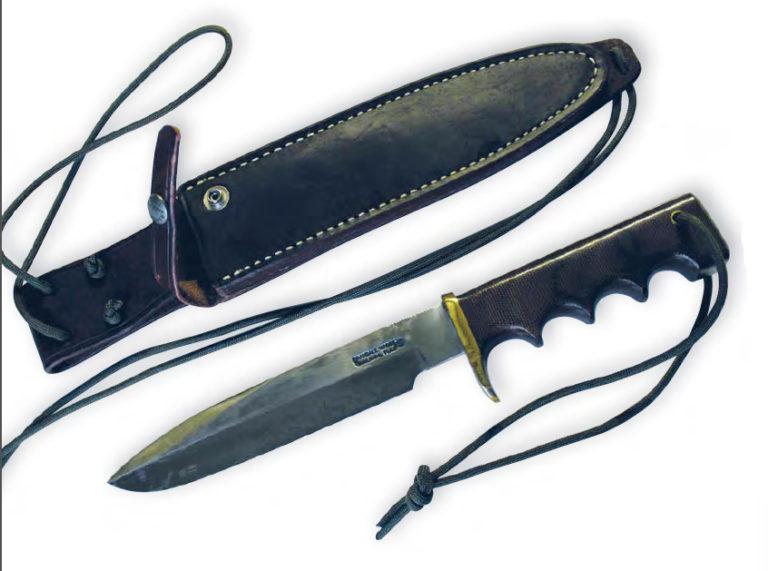
Editor’s note: The below is an excerpt from an article originally published in the KNIVES 2018 book, but it still rings true today. Hardly anyone is talking about dive knives, but they come with the kind of history and innovation that is ripe for collectors. They truly are the sleepers of knife collecting.
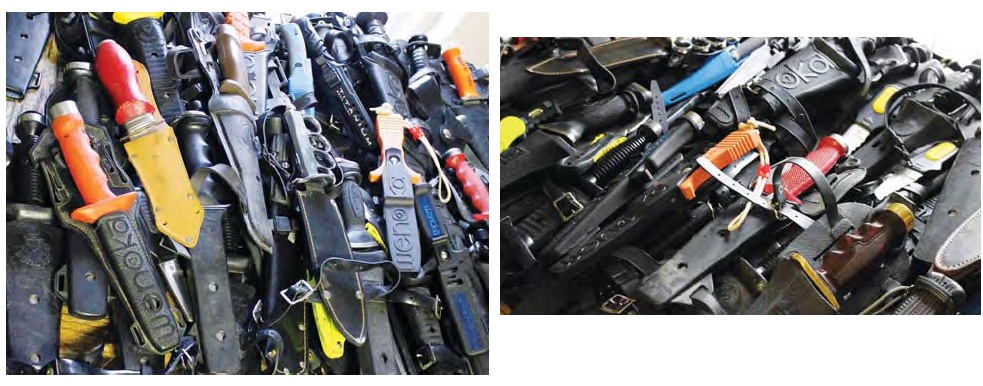
Dive knives present an opportunity for collectors to get in on the “ocean floor” of an industry segment. Other than modern, imported low-end knives, vintage dive knives are often the lowest priced blades at a gun show or flea market. The overwhelming majority of dive knives are easily acquired for between $5 and $40 apiece, similar to how U.S. military knives and theater-made knives were priced years ago, before folks woke up and recognized their true value.
They say the sea, not space, is the last true final frontier. Dive knives have been the personal tools of undersea explorers for as long as there have been divers. What the bowie knife was to the West, the dive knife is to the sea.
Before You Buy, Know the Pricing Ceiling
Dive knives are currently the “sleepers” of the knife world, and investment opportunities abound for the collector who has an interest in such pieces. Before we look at inexpensive dive knives, one should be aware of the pricey ones available today.
There are some expensive, desirable dive knives out there now, many coming from high-end makers. The expensive pieces are often associated with military and sporting uses, and include, but aren’t limited to, Randall, Gerber, Puma, Benchmade and Mission Knives & Tools, or those made specifically for the military.
Becoming familiar with expensive dive knives may help one find a bargain and to recognize certain qualities that make a dive knife valuable. Additionally, the expensive dive knives lay the foundation for price appreciation of the vintage sleepers waiting out there for savvy collectors to scoop them up.
Bargain Buys
When it comes to bargain dive knives, one sees names such as U.S. Divers, Healthways, Wenoka, AMF Swim Master, AMF Voit, Sportways, Dacor, Scubapro, Scubaskin, P.I.C., Eternal, etc.
The general pattern of the knife is a stainless steel blade with a plastic or rubber handle and sheath. There are models that can be picked up for incredibly low prices, and for what one is paying, “it’s worth it just as a knife.” It’s those kinds of investments that seem to be can’t-lose propositions, although nothing is ever guaranteed in life.
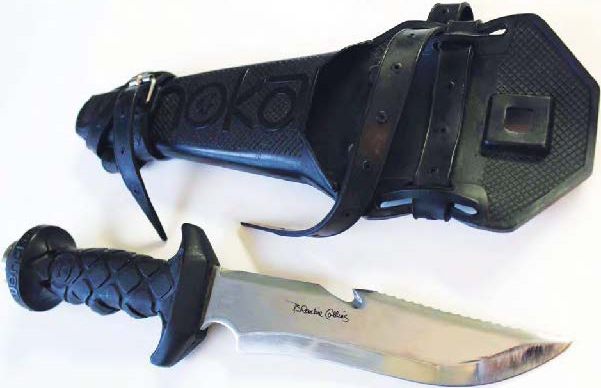
Wenoka knives are some of my favorites. They were very well made in Japan. There is a wide variety of models. The larger Wenoka dive knives have a great, sturdy feel and are nicely designed for the task at hand.
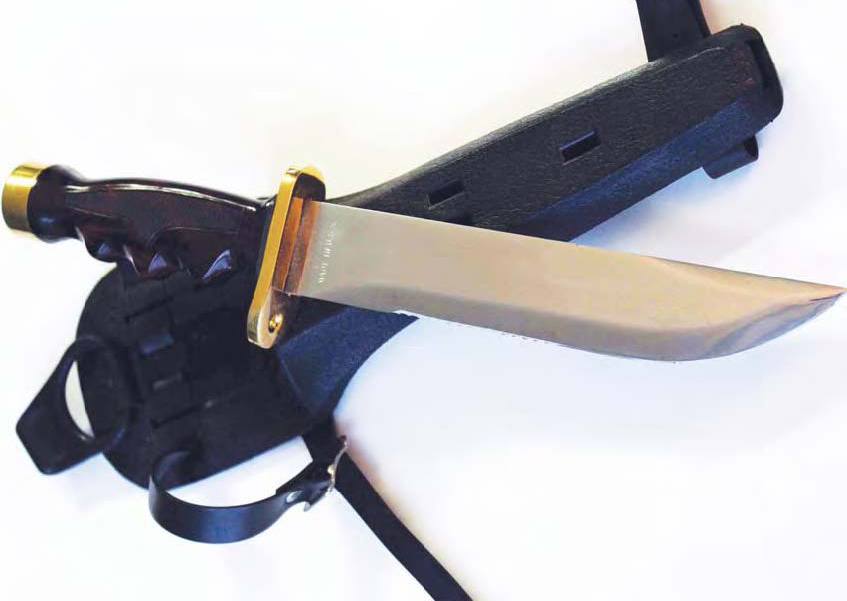
The AMF Swimaster is a beautiful, well-made knife, very high quality, serial numbered, with a heavy brass butt and guard, and made in the U.S.A.
Healthways offered the “Skin Diver,” a double-edged blade made in Solingen, Germany, with a large, red cork handle.
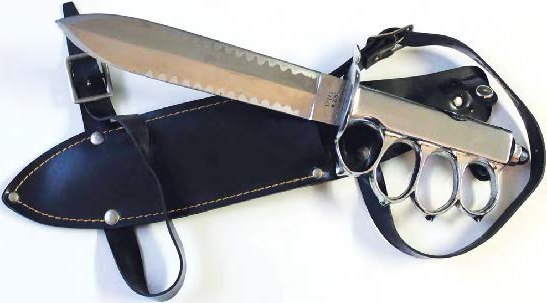
The P.I.C. Model 728 “Sea Hunter,” made in Japan, is also of high quality. It is easily recognized by its handle, which is a nickel-plated replica of the 1918 World War I trench knuckle knife. Many such dive knives were made in Japan, and even a dive hatchet, which was a hatchet, pry bar and hammer combination set that came in a vinyl sheath was available.
Buy Low Now, Sell High Later
There are so many variations of dive knives, and they appear to be limited only by the imaginations of various makers. The collector now has a chance to reasonably acquire these fascinating knives that were once strapped to divers exploring the underworld of the earth.
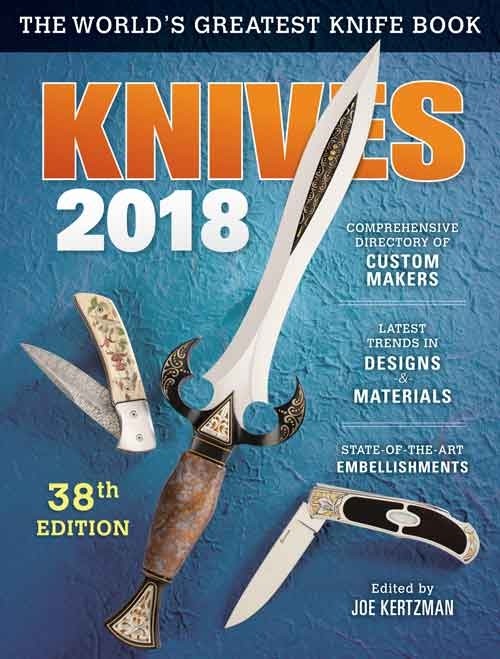
 NEXT STEP: Download Your Free KNIFE GUIDE Issue of BLADE Magazine
NEXT STEP: Download Your Free KNIFE GUIDE Issue of BLADE Magazine
BLADE’s annual Knife Guide Issue features the newest knives and sharpeners, plus knife and axe reviews, knife sheaths, kit knives and a Knife Industry Directory.Get your FREE digital PDF instant download of the annual Knife Guide. No, really! We will email it to you right now when you subscribe to the BLADE email newsletter.






